Best Coffee Filters for Every Brew Style
October 01, 2025
Title: How to Choose the Right Coffee Filter for Perfect Brewing
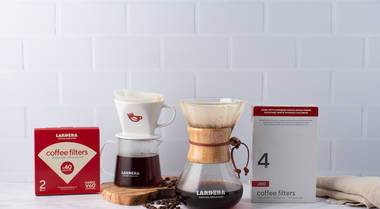
One of the most often overlooked aspects, though? Your filter.
Filters do more than just hold back the grounds- they shape flavor, clarity, body, and even aroma. The same beans brewed through different filters can taste like two completely different cups. Knowing your options helps you match the right filter to your brew style and preferences. Let's take a closer look.
The Main Types of Coffee Filters
There are a handful of common filter styles, and each one changes your cup in its own way.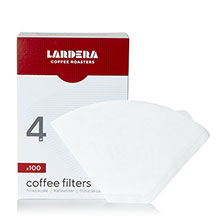
Paper Filters
These are undoubtedly the most widely used type of coffee filter. They produce a clean, crisp cup because they trap fine grounds and most of the oils. Within paper filters, you'll see: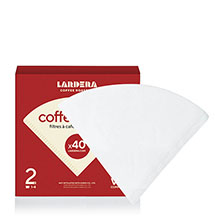
- Bleached vs. unbleached: Bleached are bright white and impart no taste to your cup, while unbleached are brown,a little more eco-friendly, but it's usually recommended to pre-rinse them to avoid a paper-y taste.
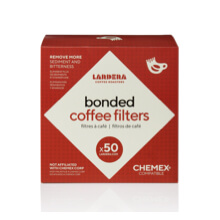
- Bonded paper filters: These are specially processed so the fibers are stronger and more uniform. That means less tearing, less paper taste, and more consistent filtering.
Cloth Filters
Reusable filters, usually cotton or flannel. They let some oils through, giving a fuller body than paper, but still hold back sediment. They require rinsing and proper drying after every use, or they can develop off flavors.Metal or Mesh Filters
Often stainless steel, these filters are common in reusable pour-over cones or in presses. They allow the most oils through, which means a heavier body and more intense flavors. The trade-off: you'll usually get a little more grit or "sludge" at the bottom of your cup.Other Types
Plastic, gold-tone, or hybrid filters exist, though they're less common. They fall somewhere between paper and metal depending on design.Why Bonded Paper Filters Stand Out
Bonded paper filters deserve their own spotlight. Unlike standard paper, bonded filters go through an additional process that fuses the fibers together. This makes the filter stronger and less likely to tear, especially when wet. It also means they filter more evenly, reduce sediment, and the risk of papery flavors slipping into your brew.If you're using a CHEMEX pour over setup, bonded filters are a fantastic choice. They give you the clean clarity of paper while avoiding common frustrations like collapse or tearing. Plus, rinsing them before brewing ensures a pure, bright cup.
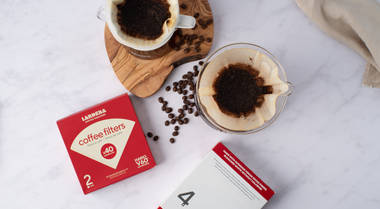
Matching Filters to Brew Methods
Different brewing styles work best with different filters. Here's how they typically line up:- Pour-over (Chemex, Hario, Kalita): Paper or bonded paper filters are ideal. They emphasize bright, complex flavors, letting lighter roasts shine. Chemex, in particular, benefits from thick, bonded filters that maintain structure and produce an ultra-clean cup. For single-origin Ethiopian Limu Washed or Costa Rican Catuai Honey beans, a bonded filter will highlight citrus and floral notes without bitterness.
- Drip coffee machines: Standard paper filters are common, specifically the #2 and #4 sizes. These are widely available in both bleached and unbleached varieties. If using unbleached, make sure to rinse before brewing to removes any residual flavors.
- French press / AeroPress with metal cap: Mesh or stainless steel filters allow oils to pass through, resulting in a fuller body and more robust flavor. Keep in mind that fine grounds can slip through, so experiment with grind sizes to prevent sediment at the end of your cup.
- Cloth filter methods (like Nel drip): These filters fall between paper and metal, letting some oils through while still catching most sediment. They're excellent for medium roasts where you want balance between body and clarity. These filters make an excellent cup, but are higher maintenance than paper or metal, requiring careful cleaning and proper drying after each use to prevent off flavors.
- Roast considerations: Light roasts taste brightest with paper or bonded filters because clarity emphasizes fruity and floral notes. Dark roasts, in contrast, benefit from mesh or cloth filters, which preserve oils and create a richer mouthfeel.
Roast level can also play a role:
- Light roasts often taste best with paper or bonded filters, since clarity emphasizes their fruity or floral notes.- Dark roasts can pair well with mesh or cloth, since their smoky, chocolatey richness benefits from a fuller body.
Tips for Better Filter Use
Even the best filter won't save a brew if it's used incorrectly. A few easy habits make a big difference:Rinse paper filters first: This removes papery flavors and preheats your brewer.
Fold filters properly: Especially for Chemex or cone-shaped filters, folding along the seams prevents collapse.
Replace reusable filters often: Metal lasts for years, but cloth filters should be swapped regularly to avoid buildup.
Watch your grind size: Too fine a grind clogs filters; too coarse can cause under-extraction. Pair grind with filter style for best results.
Filter With Intention
At first glance, filters may look like an afterthought, but they're an essential part of your coffee's flavor. Choosing the right one can highlight brightness, deepen body, or balance everything in between.If you're after consistency and clean flavor, bonded paper filters are an excellent starting point, and a reliable upgrade if you've only used standard paper before. But don't be afraid to experiment. Switching filters is one of the easiest ways to see how your favorite beans can taste completely new.
At the end of the day, the right filter isn't just about brewing coffee, it's about brewing the coffee you love.
